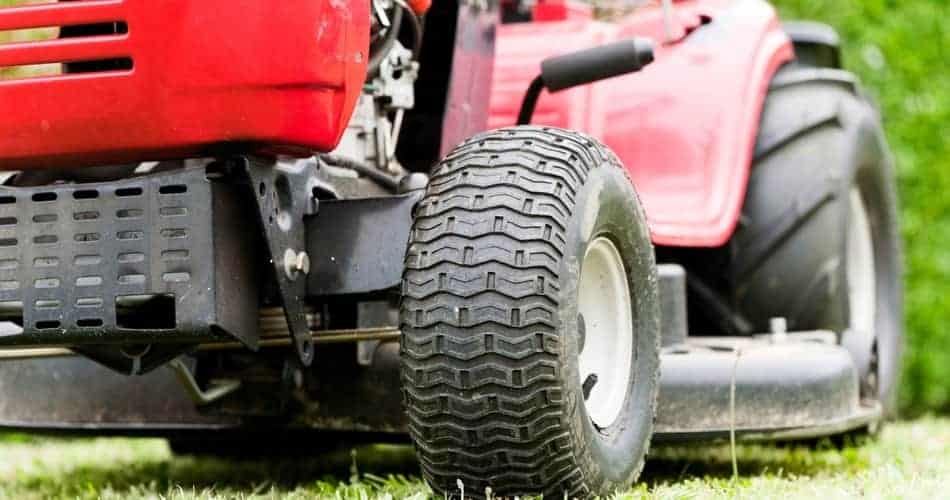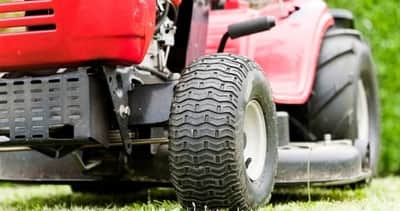The average homeowner may not know what a lawn mower clutch is, let alone how it works. But, the truth of the matter is that these clutches are very important and can be one of the most expensive parts of your lawn mower.
An electric lawn mower clutch also referred to as a power take-off (PTO) clutch, sends power to the blades of the mower. The electromagnetic apparatus acts as a brake to slow down the blades when the clutch is disengaged.
The clutch is a vital part of the functionality of the lawn mower. This article will explain what the clutch is, how it works, and how you can make sure yours is running at the best quality.
A multimeter is valuable in helping you diagnose your clutch problems.

What is a Lawn Mower Clutch?
It is essential that you understand your lawn mower clutch before starting to operate it. In a nutshell, it’s where the blade connects with the engine and transmits power to cut grass.
It is made out of multiple, complex components, including a powerful magnet that works to engage the blade. It also includes a brake pad, which is the piece that slows down the blade when you turn off your lawn mower.
While the mechanism is complex, it is important to have an understanding of how it works so you do not waste your money on replacements or repairs that are not needed.
There are multiple types of lawn mower clutches that have slight differences in parts. Ultimately, all of the clutches serve the same purpose.
How Does a Lawn Mower Clutch Work?
The clutch in your lawn mower works by connecting the power of your engine to the blades of your mower.
On top of the clutch is a flat pulley connected to the clutch through a shaft that goes through the middle.
When the engine engages the pully, it spins a rotor inside of the clutch. When the clutch is disengaged, the rotor spins freely inside of it.
Once you engage the clutch, the powerful magnet inside is activated and pulls against a plate within the rotor. When this process occurs, it begins to spin the pulley that is connected to the blades.
The clutch also acts as a brake when the blades are turned off. When you disengage the clutch, the magnetic force is released, and the brake pad on the clutch makes contact with the pulley to slow down the deck.
You activate your clutch by flipping the switch on your lawn mower dashboard. You should hear the clutch turn on under the deck; otherwise, there might be a problem with your mower.
How Will You Know Your Clutch Needs Replacement?
There are many reasons that your clutch might need to be replaced. With so many variables, it can be hard to determine when your clutch might need replacement. One of the most common reasons is when you notice that your lawn mower blades are not spinning or that they are not engaging when your turn on the clutch.
Some examples of when you might want to replace your clutch include:
- The lawn mower won’t start when you engage the blades.
- The deck doesn’t spin fast enough when engaged.
- When the blade starts to spin, it vibrates too much and slows down.
Before replacing your clutch, you want to be sure that the problem is actually with your clutch and not another part of your machine.
How do You Check an Electric Lawn Mower Clutch?
If the lawn mower is making any unusual sounds, not running properly, or beginning to vibrate, this could indicate that there may be a problem with the clutch.
If you need to check your electric lawn mower clutch, there are a few things you can do.
Check the Power Line Going into Your Clutch
The first step should be to make sure that your clutch is receiving enough power. If you do not hear the clutch is engaged when you flip the switch, you should use a multimeter to gauge the amount of electricity being sent to the clutch.
We really like this multimeter, also known as the volt/ohms meter from Amazon.
In general, the clutch should be receiving about 12 volts of electricity. If your clutch is not getting enough electricity, you know that there is something wrong with your lawn mower and not the clutch.
In contrast, if your clutch is getting enough electricity, you know something wrong with your clutch.
Check the Magnet in Your Clutch
If your clutch is receiving power, then there may be a problem with the electromagnet inside of the clutch.
A potential problem could be with the resistance against the magnet. In order to check for resistance, you will need to use your multimeter again.
Resistance is measured in Ohms, so you will need to set your multimeter to Ohms and attach it to your electromagnet. In general, your Ohm reading should be between one and three.
A high Ohm reading means that there is a higher resistance rating. This would require more energy to complete the circuit. On the other hand, a lower Ohm reading might mean there is a problem with the wiring, and the electromagnet is too powerful.
Check the Brake Pad on Your Lawn Mower Clutch
When checking a lawn mower clutch, it is important to inspect the brake pad. This should be easy by removing and inspecting the hub for buildup, corrosion, or other obstructions that could prevent good contact.
The pulley that is connected to the blade of the lawn mower needs to make good contact with the brake pad in order for it to work correctly.
The brake pad should be replaced when it is worn out. The fine grit on the brake pad will wear down and need to be replaced.
Check the Plates, Bolts, Springs, and Pulleys
There are many intricate parts to your lawn mower clutch. You will want to check all of them to make sure there is no wear-and-tear or severe damage to them.
Making sure everything is securely tightened can help extend the life of your clutch. This includes making sure that your clutch has the right amount of torque.
Generally, your clutch should have 50-60 ft-lbs of torque to make sure everything is tight enough to be secure but not too tight. Each machine will have different specifications, so be sure to find that out prior to disassembling your machine.
Some clutches are able to be disassembled for you to examine all of the pieces. If possible, you should try to inspect these pieces when you can to help extend the life of your clutch, and ultimately, your lawn mower.
If any of the components listed above are broken or damaged, you should consider replacing those parts or getting a new clutch, depending on the situation. In most cases, the dealer for your lawn mower will have the replacement part that you need.
Final Thoughts
Lawn mowers are a valuable commodity for many homeowners. Keeping them running smoothly and making sure they last as long as possible is important to you, your lawn, and your wallet.
